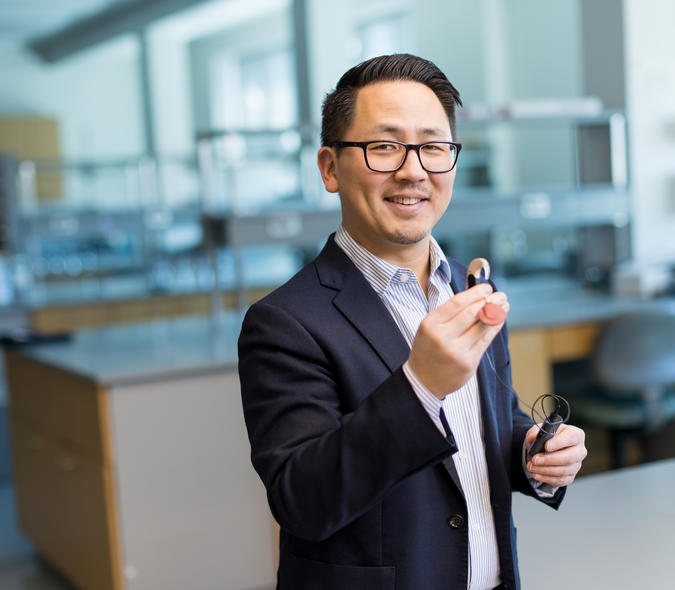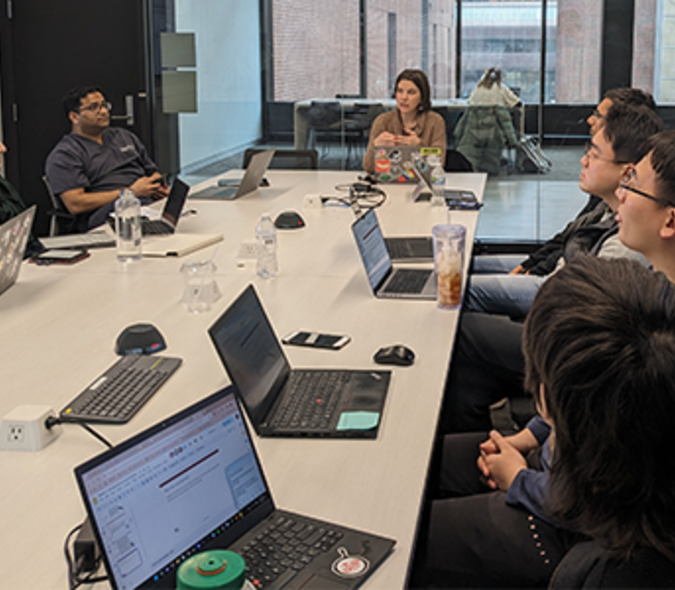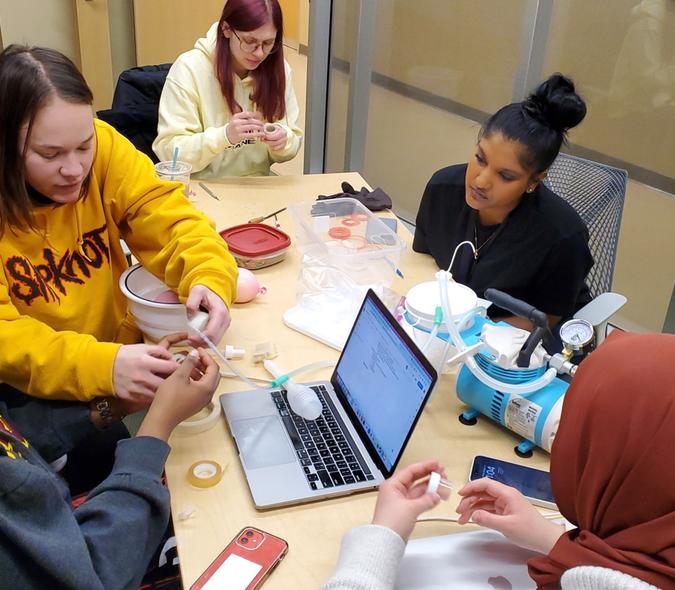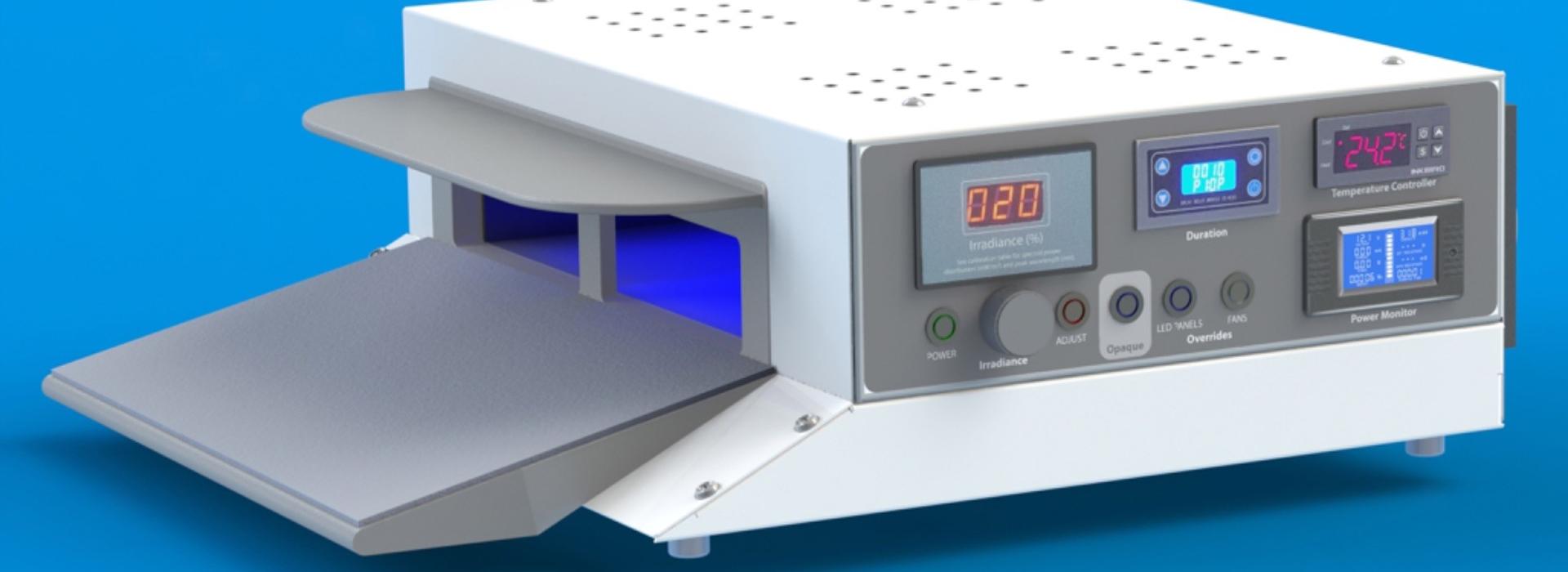
Students see an Opportunity to treat Raynaud's Phenomenon Symptoms with Blue Light
While few engineering students have the opportunity to patent or publish their work while in school, Prof. Steven Saliterman's biomedical engineering undergraduate student team accomplished both.
In 2017, a physician-colleague reached out to Saliterman (physician, professor in the Department of Biomedical Engineering, and member of the International Society for Optics and Photonics) inquiring if non-pharmaceutical approaches to treating symptoms of Raynaud’s phenomenon (and disease) existed or could be developed. Saliterman reviewed possible options and found that blue light had been used successfully to induce vasodilation – or widening of blood vessels – in test animals. Given that Raynaud’s disease causes blood vessels to constrict, Saliterman suspected that blue light could be a potential treatment.
Near that time, Saliterman had also just completed a project that studied the use of blue light in neonatal jaundice. His undergraduate engineering students Jennifer Chmura and Brett Levac had developed a blue light therapy that could be used in resource-limited regions in Nigeria.
Over the next six years, Saliterman, Chmura, and Levac were joined by BME undergraduate students James Kerber and Kushal Sehgal, physiology undergraduate student Emily Wagner, and Jerry Molitor, a professor in Rheumatology, to research a cellular signaling mechanism that could induce vasodilation in humans and be delivered through a portable blue light device.
The device
After evolving from a foam-board mockup to three prototypes, the phototherapy device became a portable instrument that could produce low-level light at a specific wavelength and power density to modulate a signaling pathway of the microvascular structures. The team also brainstormed several translational medical devices (such as wearable light-emitting gloves and stockings) that could be used as mobile forms of the therapy. Working with Vaughn Schmid in Technology Commercialization, the team submitted both provisional and utility patents.
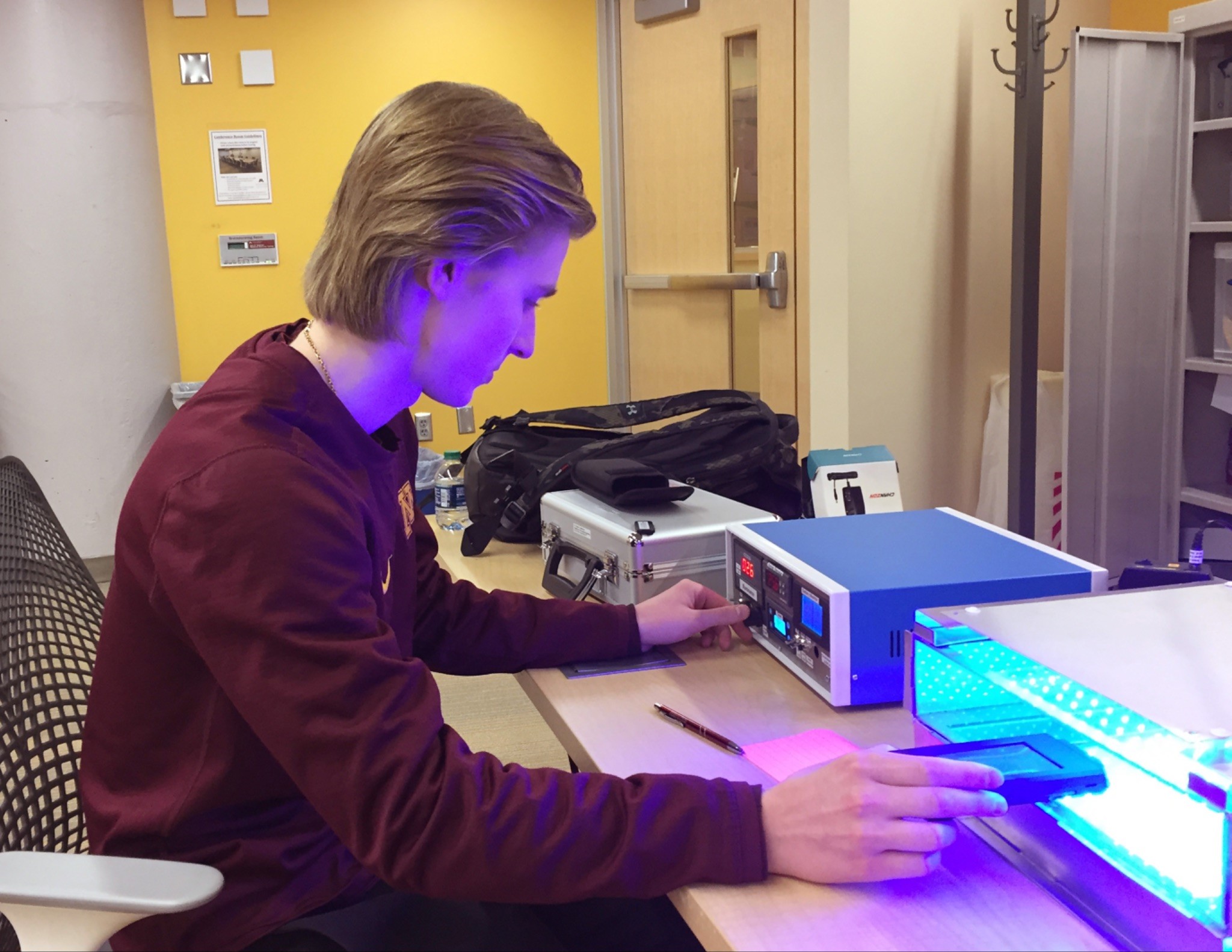
In 2021, the team received approval from the University’s Institutional Review Board to proceed with their clinical study protocol. In tandem with the protocol, the team performed over 20 partial test runs, which provided insight into refining the instrument and the protocol.
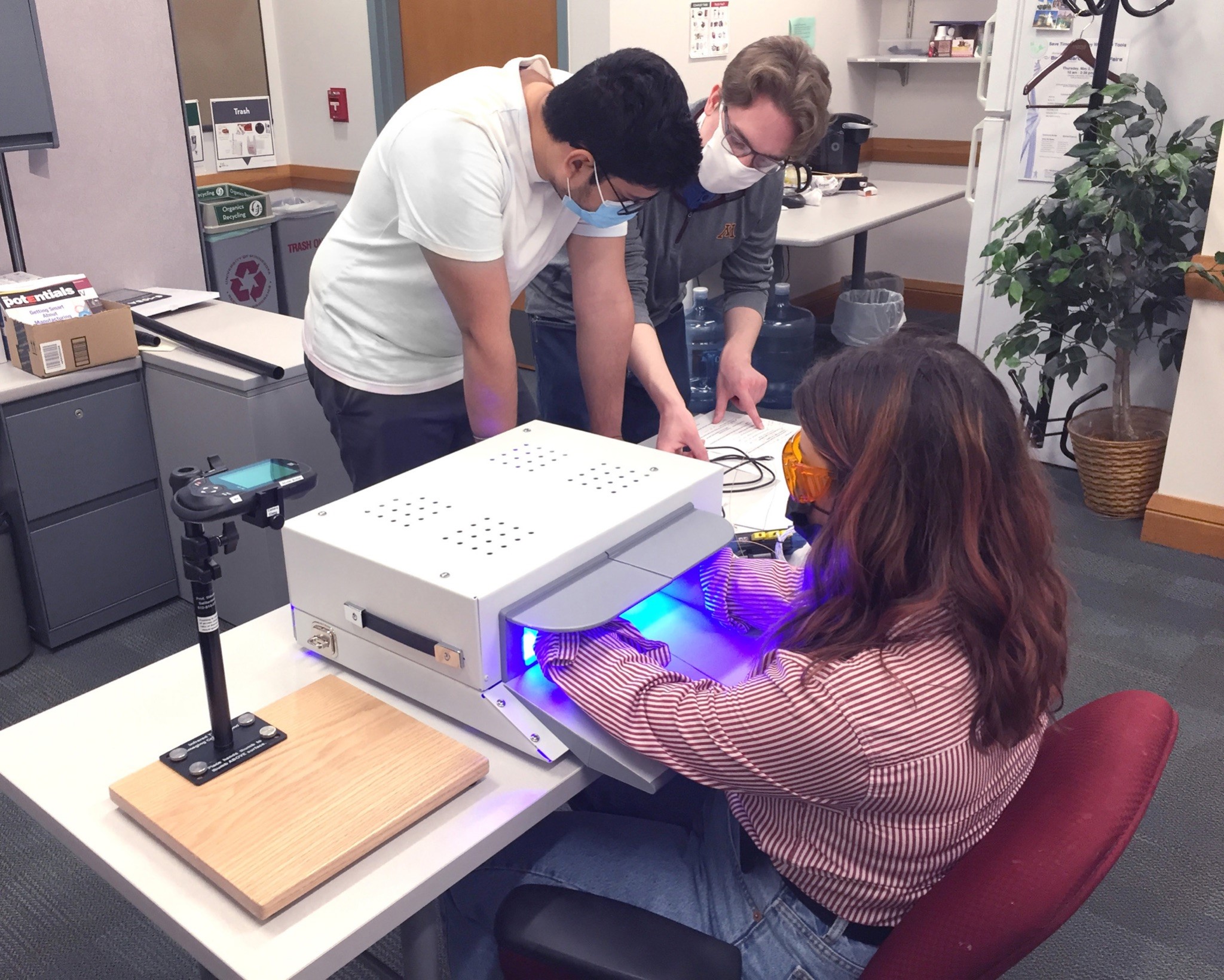
Accomplishments
The team and the University received a utility patent (U.S. 11,865,357) for the light-based treatment devices and methods on January 9, 2024. A few months later, the project was published in the Annals of Biomedical Engineering, titled An Experimental Phototherapy Device for Studying the Effects of Blue Light on Patients with Raynaud’s Phenomenon.
The team today
While the team remains active today, all of its student members have gone on to graduate studies inspired by the project. Emily Wagner is currently a Master’s in Public Health student at the University of New England. “During the project, I became interested in studying the factors that lead to the disease, like physiological, genetic, as well as external aspects such as the social determinants of health and environment,” says Wagner. Passionate about “engineering in medicine”, Brett Levac is currently an Electrical Engineering PhD candidate at the University of Texas at Austin. James Kerber is currently a student at the University of Minnesota Law School. “While working on getting our patent, the process inspired me to want to do it myself, ” says Kerber. “The project opened my eyes to seeing what a career in law and engineering looks like, more than any class could have taught me.”
Saliterman credits the team members’ different interests for the project's success. Together, they had experience in biomedical and electrical engineering, intellectual property law, public health, rheumatology, and internal medicine. “The diversity in our group created an incredible environment that always kept everyone thinking from a different perspective, including patient care, research, and intellectual property,” says Saliterman.
The future of engineering
For Saliterman, this project is a testament to the power of interdisciplinary student teams in research that combines interests and talents at the University. “Most importantly, a medical device project must recognize that patients and their physicians are the ones we serve. It is this shared belief that allowed our students to work well beyond receiving academic credit, meeting artificial deadlines, or even the promise of acknowledgement, to accomplish something remarkable.”
For more information about the project, including its publications and other downloads, please visit the Raynaud’s Project webpage on Saliterman’s website.
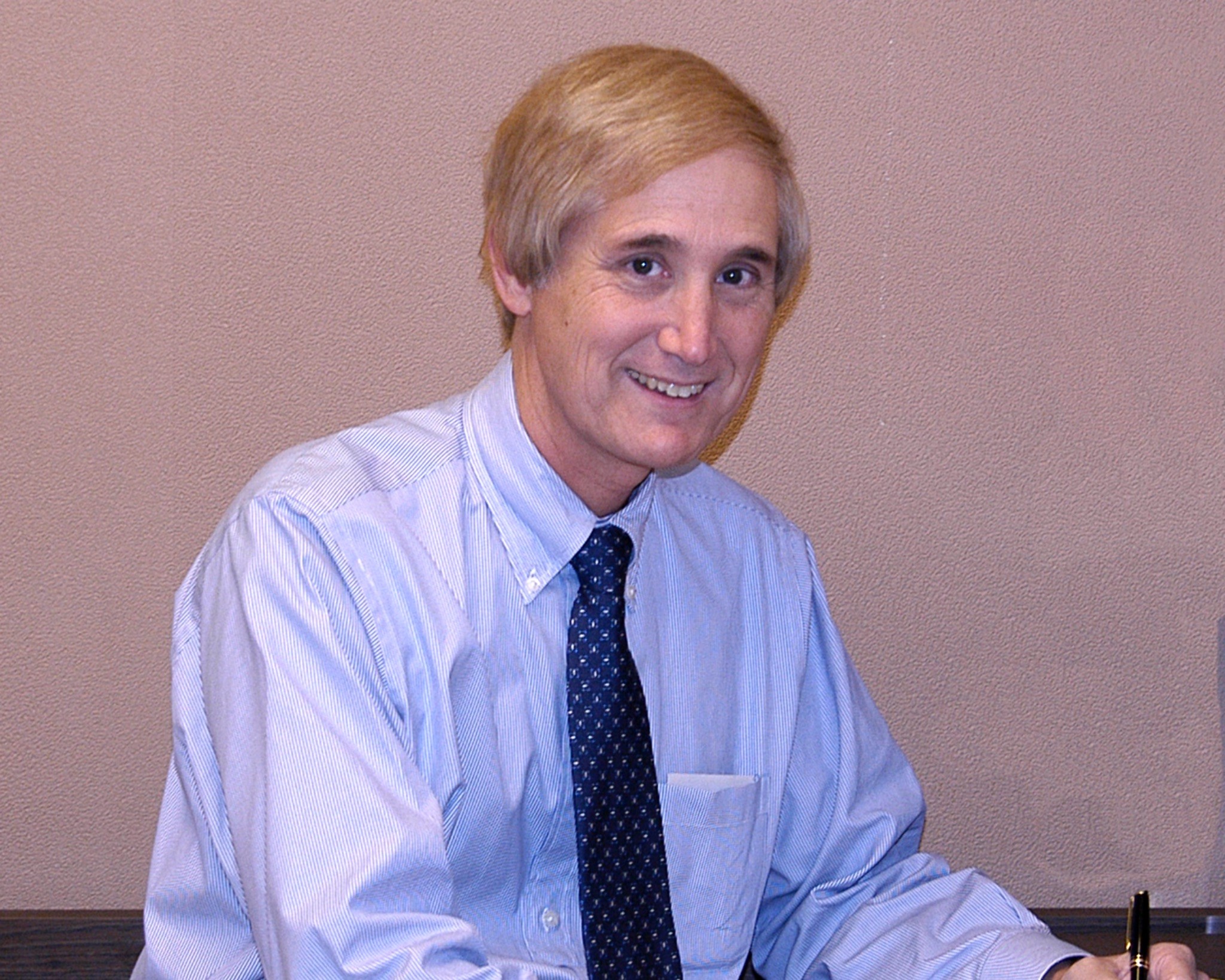
Cover Image: The experimental phototherapy device
Image 1: Brett Levac performing wavelength and power measures on the last version of the prototype
Image 2: Kushal Sehgal, James Kerber, and Emily Wagner performing a test run of the study protocol with the phototherapy device
Image 3: Steve Saliterman

